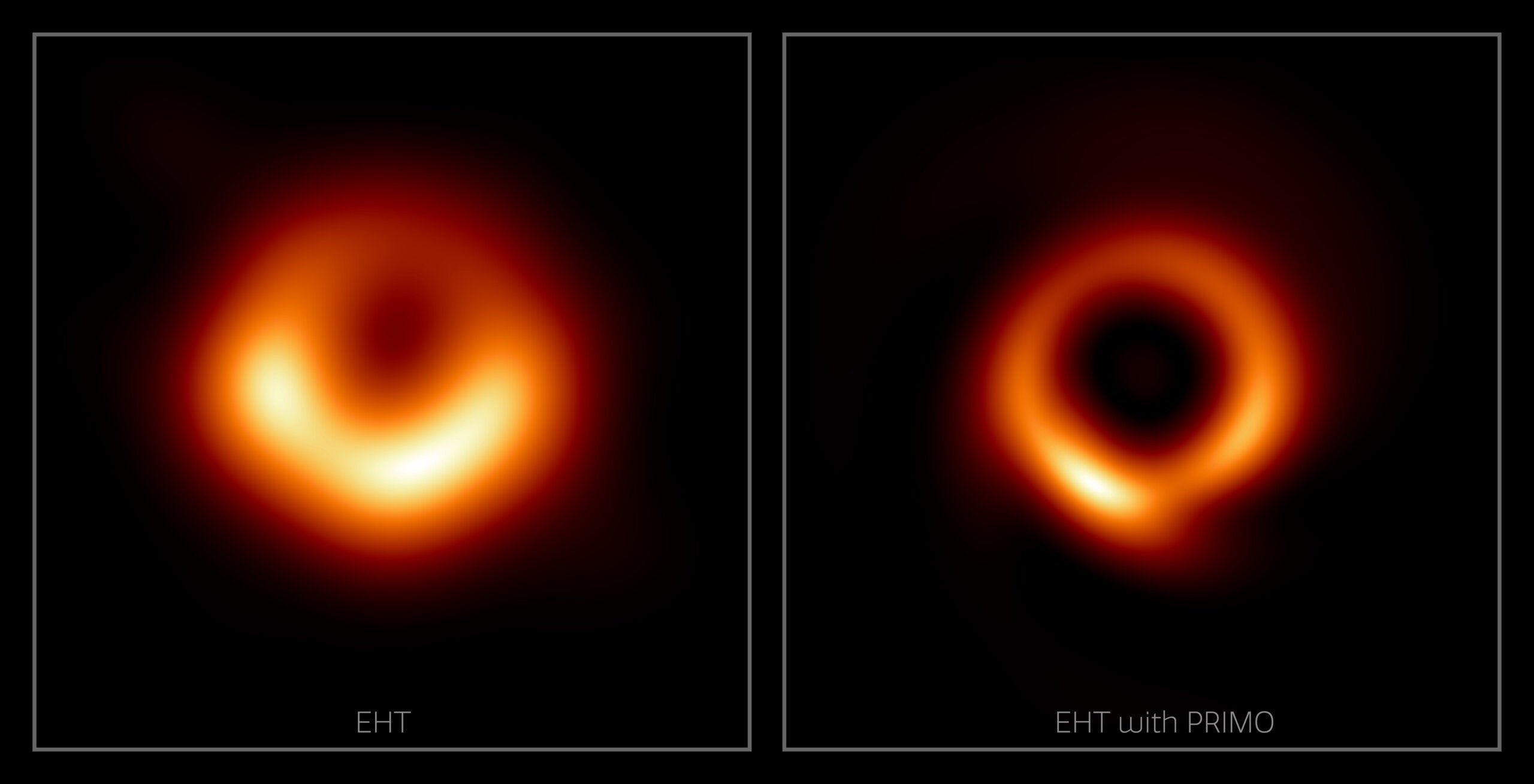Hints of black holes, some of the universe’s most extreme objects, first appeared in Einstein’s equations of relativity as early as 1916. It wasn’t until the 1970s that indirect evidence suggested they actually existed. These days, we can watch stars whipping around the black hole at the center of our galaxy and detect the gravitational bell-tones of black holes colliding.
But the first image of a black hole—complete with a glowing disc of material flowing at relativistic speeds into an immense central shadow—made it all concrete. There really are regions of space-time so warped nothing can escape. Look, there’s one right there.

The story gets more mind-bending. Black holes aren’t just extreme for their off-the-charts gravitation, they can also be extremely large. The supermassive black holes lying at the centers of galaxies—like M87*, the subject of that first-ever black hole portrait above—can have masses millions or billions of times more than our sun. At scales like that, the mind fails utterly. Too big.
Luckily, we have (mildly terrifying) NASA visualizations to help our feeble minds make sense of the universe of which we are only a vanishingly small part.
In a new animation, 10 supermassive black holes are placed within the context of our solar system to scale their size. Some of the smaller members of the group are nothing to write home about cosmically. With a measly mass of 4.3 million suns, the diameter of the black hole at the center of the Milky Way—also recently imaged—takes up just half the orbit of Mercury.
M87*, the blurry 5.4-billion-sun subject of the images above, is something else entirely. To traverse the shadow pictured, you’d have to travel beyond the asteroid belt and outer planets to regions it takes spacecraft a decade to reach. Even light, traveling 670 million miles per hour, would take a few days to go from one end to the other.
And there are even bigger fish out there. The distant, 60-billion-sun TON 618, the final black hole in the visualization, could swallow M87*, our entire solar system, and everything in it without a hint of indigestion. Lucky for us, it’s over 10 billion light years away.
Image Credit: NASA’s Goddard Space Flight Center Conceptual Image Lab
* This article was originally published at Singularity Hub

0 Comments